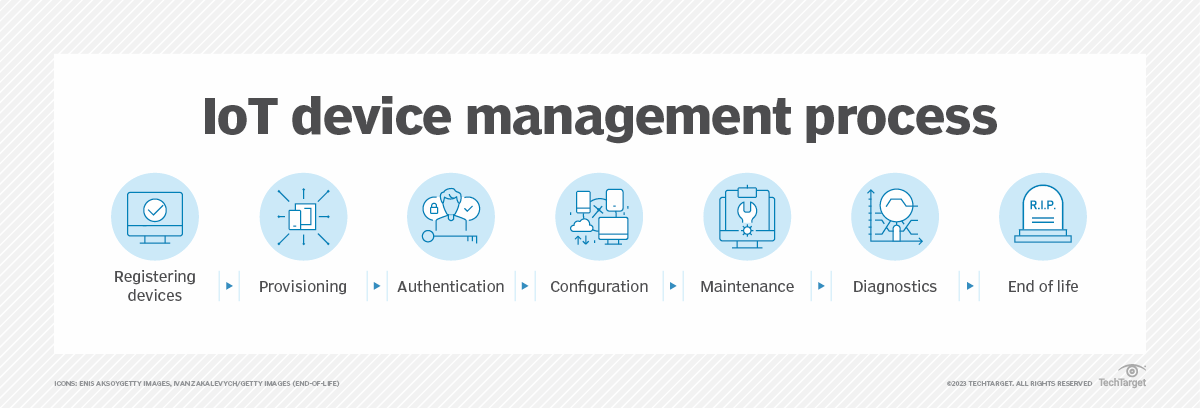Internet of Things Device Management

Internet of Things (IoT) device management is a system designed to control, configure, monitor, and maintain connected devices remotely. This process is typically facilitated by a centralized platform that IT administrators can access from any location with an internet connection. These management tools provide organizations with greater control over their devices, allowing them to track and manage their devices, such as smartphones, tablets, and other IoT devices. Major cloud providers like AWS, Google Cloud, and Microsoft Azure offer IoT device management as part of their service offerings.
IoT device management operates through the installation of a client software agent on each connected device. This agent communicates with the management platform using standard messaging protocols, such as MQTT. The management system controls the entire lifecycle of IoT devices, ensuring that they are properly integrated, configured, and maintained. The process includes several key stages: device registration, provisioning, authentication, configuration, maintenance, diagnostics, and decommissioning when the device reaches its end of life.
The first stage in IoT device management is registering devices, which must be enrolled in the management system before they can exchange data. Provisioning follows, where the devices are customized from their factory settings to become part of the user’s network. Authentication is essential for ensuring that only authorized devices are included in the system, which helps secure sensitive data and prevent security breaches. After authentication, devices are configured to meet specific needs, which can include adding intelligence or modifying functionality. Regular maintenance and diagnostics are necessary to keep devices secure, up-to-date, and operational.
Key features of IoT device management include easy onboarding, allowing IT admins to add new devices quickly; remote troubleshooting to resolve issues without manual intervention; and comprehensive metadata management, which helps track the device's status, such as serial number, firmware version, and other details. Additionally, device management systems offer security features like encryption, access control, and authentication to safeguard against unauthorized access. Over-the-air (OTA) updates also enable IT admins to update devices remotely, ensuring that devices remain secure and up-to-date.
Despite its benefits, IoT device management comes with certain challenges. As the number of IoT devices grows, managing these devices can become increasingly complex. Security concerns are a significant issue, as many devices may not be adequately secured, making them vulnerable to cyberattacks. Device proliferation can lead to network congestion, while the vast amounts of data generated by IoT devices can be difficult to manage and analyze. IoT device management tools, however, help organizations mitigate these issues by enabling remote management, ensuring security, and providing solutions for handling large data volumes.
source: https://www.techtarget.com/iotagenda/definition/internet-of-things-device-management-IoT-device-management